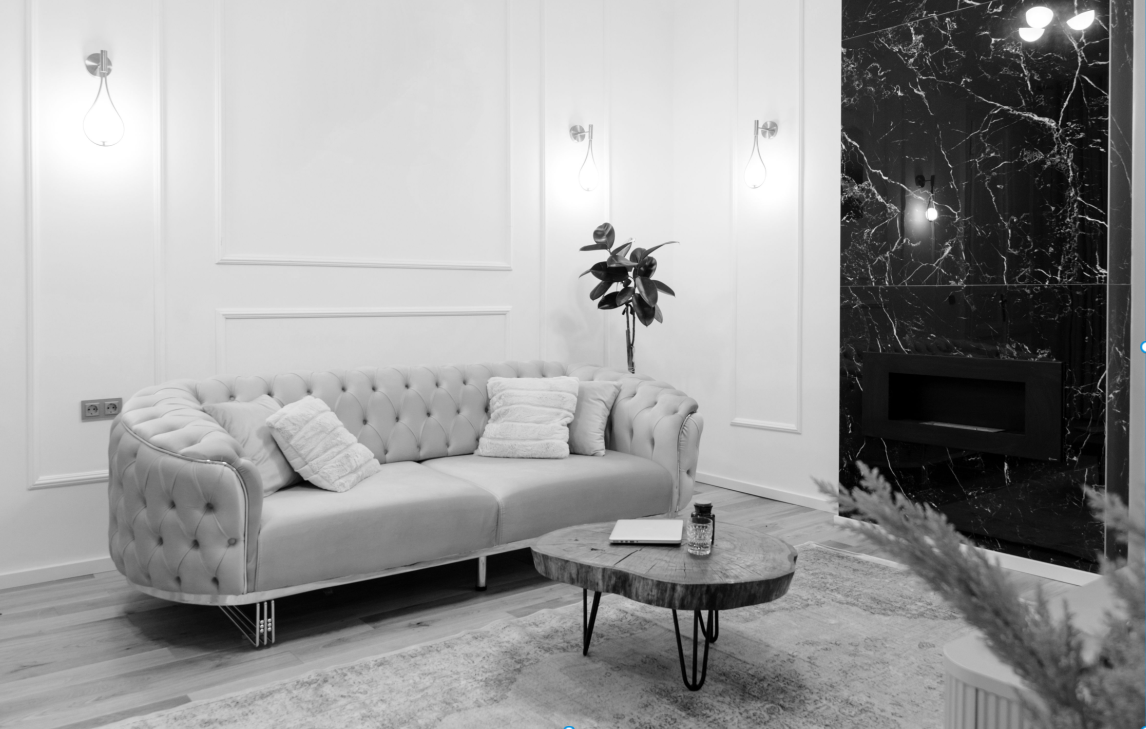Semi Commercial Property Mortgages for Buy to Let – A Deep Dive Into Semi Commercial Mortgage Options.
Property investors seeking to diversify their portfolios beyond traditional buy to let properties often discover the compelling opportunity of mixed-use properties. A semi commercial mortgage for buy to let opens the door to investing in properties that combine both residential and commercial elements, offering dual income streams and unique investment advantages.
This comprehensive guide explores everything you need to know about semi commercial buy to let mortgages, from eligibility requirements and application processes to tax implications and investment strategies. Whether you’re an experienced landlord looking to expand into commercial property or a business owner seeking premises with residential accommodation, understanding these specialized mortgage products is crucial for making informed investment decisions.

What is a Semi Commercial Mortgage for Buy to Let?
A semi commercial mortgage for buy to let is a specialised lending product designed for properties that combine both residential and commercial elements under the same title. These mixed-use properties typically feature business premises on the ground floor with residential accommodation above, creating opportunities for property investors to generate rental income from both commercial and residential tenants.
Unlike pure commercial mortgages or standard residential buy to let mortgages, semi commercial mortgages occupy a unique position in the lending market. They offer more favourable terms than full commercial mortgages while providing access to properties that wouldn’t qualify for standard residential buy to let finance.
The key distinction for pricing lies in the properties residential and commercial footprint – if the residential element is above 50% lenders will offer cheaper funding than if the residential element is below 50%.
Loan-to-Value and Interest Rates
Semi commercial buy to let mortgages typically offer loan-to-value ratios of up to 75%, making them accessible to property investors with a minimum deposit of 25%. Interest rates are positioned strategically between residential buy to let mortgages (which offer the lowest rates) and pure commercial mortgages (which carry the highest rates), reflecting the balanced risk profile of mixed-use properties.
These mortgages are particularly suitable for property investors looking to diversify their portfolios beyond traditional residential buy to let properties. The dual income streams from both commercial and residential tenants can provide more stable returns and reduce the impact of void periods compared to single-use properties.
Eligibility Requirements and Deposit
The minimum deposit requirement for a semi commercial mortgage for buy to let typically ranges from 25-30% of the property’s valuation. This deposit can come from various sources, including cash savings, equity release from existing properties in your property portfolio, or a combination of both approaches.
UK lenders assess applicants based on several criteria beyond the deposit requirement. Credit scores must demonstrate responsible financial management, while income assessment considers both personal earnings and existing rental income from any current buy to let property investments. Property investors with a proven track record in the buy to let market often find more favourable terms available.
Application Options
Semi commercial buy to let mortgages are available to various types of applicants, including individuals, limited companies, Limited Liability Partnerships (LLPs), and pensions. Many property investors choose limited company structures for their property business, as this can offer significant tax advantages and improved mortgage interest deductibility. Most of the mortgage we arrange are via Ltd company vehicles.
Who Can Apply for Semi Commercial Buy to Let Mortgages
Experienced buy to let landlords represent the primary market for semi commercial mortgages, as they already possess the necessary knowledge and experience to manage rental properties effectively. These property investors often view mixed-use properties as a natural progression in building their property portfolio and diversifying their rental income streams.
Business owners seeking premises with residential accommodation form another key demographic. For example, a restaurant owner might purchase a property with dining space below and a flat above, allowing them to live on-site while operating their business premises. This arrangement can provide both personal accommodation and business operational efficiency.
Property investors focused on diversifying their rental income streams find semi commercial properties particularly attractive. The ability to collect rent from both commercial and residential tenants reduces the impact of void periods and provides exposure to different rental market segments.
Limited companies focused on mixed-use property investment can benefit from favourable tax treatment, particularly regarding mortgage interest deductibility. Corporation tax rates can be more advantageous than personal income tax rates for higher-rate taxpayers, making limited company ownership an attractive option for larger property portfolios.
Types of Semi Commercial Properties for Buy to Let
The most common example of a semi commercial property across the UK is a shop with flat above. These properties are particularly prevalent in town centres and suburban high streets, where ground floor retail spaces are combined with one or more residential units on upper floors. Such properties appeal to both local businesses seeking retail spaces and tenants requiring affordable accommodation.
Restaurant or pub properties with separate residential accommodation represent another significant category. These mixed-use properties often include manager’s or owner’s accommodation, making them attractive to hospitality businesses while providing rental income potential.
Office buildings with caretaker’s apartments offer opportunities in business districts where commercial demand is strong. These properties typically feature professional office space with a small residential unit for building management or security purposes. The commercial element often commands higher rents than retail spaces, while the residential component provides steady income.
Industrial units with manager’s living quarters are common in light industrial areas and business parks. These properties combine workshop or storage facilities with basic residential accommodation, appealing to small manufacturers or logistics businesses that benefit from on-site management presence.
Healthcare facilities with residential components, such as dental practices or veterinary clinics with accommodation above, represent a growing market segment. These properties benefit from stable commercial income from healthcare professionals while providing residential rental opportunities.
Any mixed-use property on the same plot combining business and residential space can potentially qualify for semi commercial finance, provided it meets lender criteria regarding the residential percentage and overall property structure.

Benefits of Semi Commercial Buy to Let Mortgages
Dual income streams from both commercial and residential tenants provide the primary advantage of semi commercial buy to let investment. This diversification reduces dependence on a single tenant type and can provide more resilient rental income during economic fluctuations. When one element experiences void periods, the other continues generating income, supporting overall property cash flow.
Lower interest rates compared to pure commercial mortgages make semi commercial properties more accessible to property investors. While rates remain higher than residential buy to let mortgages, the differential is often only 1-2%, making the investment proposition attractive given the potential for higher yields from commercial tenants.
These mortgages are generally easier to obtain than full commercial finance due to the reduced lender risk perception. The residential element provides stability and familiarity for lenders, while the commercial component offers yield enhancement. This balanced risk profile makes uk lenders more comfortable with semi commercial lending than pure commercial mortgages.
Portfolio diversification beyond traditional residential buy to let properties allows property investors to spread risk across different market segments. Commercial and residential rental markets often move independently, providing natural hedging against sector-specific downturns.
Longer repayment terms of up to 25 years are available with many lenders, matching those offered on residential buy to let mortgages. This extended term structure improves cash flow compared to shorter commercial mortgage terms, making the investment more manageable for individual property investors.
Semi commercial mortgages serve as an effective stepping stone towards pure commercial property investment. Property investors can gain experience managing commercial tenants and understanding commercial property dynamics while maintaining the security of residential rental income.
Interest Rate Flexibility
The choice between fixed rate and variable rate options provides flexibility to match different risk profiles and market outlooks. Fixed rates offer certainty for budgeting and cash flow planning, while variable rates can benefit from potential rate decreases during favourable market conditions.
Rates typically range 1-2% higher than residential buy to let mortgages but remain competitive compared to commercial mortgage rates. This positioning reflects the balanced risk profile of mixed-use properties and makes them attractive to property investors seeking enhanced yields without full commercial property risk exposure.
Some lenders offer potential repayment holidays with certain products, providing additional flexibility for property investors managing multiple properties or dealing with temporary cash flow challenges. These features can be particularly valuable during property refurbishment periods or when managing tenant transitions.
Application Process and Timeline
The application process begins with an initial consultation and property assessment with a specialist mortgage broker experienced in semi commercial lending. These specialist teams understand the unique requirements of mixed-use properties and can guide property investors through the complex application process while identifying suitable lenders for specific circumstances.
Financial documentation requirements are comprehensive, including proof of income and employment for the last three years, bank statements for the previous 3-6 months, and details of any existing property portfolio including rental income. Business accounts are required if applying through a limited company structure, along with projected business plans for the property investment.
Lenders typically provide a decision in principle within 24-48 hours, subject to satisfactory documentation and initial property assessment. This preliminary approval allows property investors to proceed with confidence while conducting property searches and negotiations.
The full application submission and underwriting process involves detailed analysis of both the property and applicant circumstances. Lenders assess rental yield projections, local market conditions, and the applicant’s experience managing similar properties. Property types are evaluated for their commercial viability and residential appeal.
Typical completion timelines range from 4-6 weeks from full application submission, assuming straightforward circumstances and prompt response to any additional information requests. Property valuation and legal work are conducted in parallel to minimize delays and ensure efficient completion.
Required Documentation
Proof of income and employment for the last three years demonstrates financial stability and repayment capacity. Self-employed applicants must provide accounts/tax returns, while employed applicants need payslips.
Bank statements for the previous 3-6 months show financial management patterns and deposit source verification. Lenders scrutinize these statements for evidence of regular savings, existing financial commitments, and overall financial stability.
Details of existing property portfolio and rental income help lenders assess the applicant’s experience and existing debt secured against other properties. This information influences lending decisions and available loan amounts, particularly for experienced property investors with proven track records.
Business accounts are essential if applying through limited companies, demonstrating corporate financial health and business viability. These accounts must show adequate retained profits to support mortgage payments and property management costs.
Property details including projected rental yields require careful preparation, supported by local market research and comparable evidence. Lenders stress-test these projections against local market conditions and economic scenarios to ensure sustainable investment returns.
Costs and Fees Involved
Lender arrangement fees typically range from 1-2% of the loan amount. These fees can often be added to the mortgage debt, reducing immediate cash requirements but increasing overall borrowing costs through interest charges over the loan term.
Property valuation fees range from £500-£2,000 depending on property value and complexity. Mixed-use properties often require specialist valuers familiar with both commercial and residential markets, potentially increasing costs compared to standard residential valuations. These fees are typically paid directly to the valuation company.
Legal fees for conveyancing and mortgage completion vary depending on property complexity and local market rates. Semi commercial transactions often involve additional legal work compared to standard residential purchases, including commercial lease reviews and mixed-use property specific searches.
Broker fees are usually structured within the lenders arrangement fees (so not payable). As brokers we receive commission from lender so do not charge a client fee and we only get paid on completion meaning we are incentivised to get the funding over the line.
Stamp Duty Land Tax includes the additional 3% surcharge for second properties, significantly increasing purchase costs for property investors. The total stamp duty liability must be calculated based on the full purchase price, making it a substantial consideration in investment calculations.
Building insurance costs are typically higher for mixed-use properties due to the increased complexity and risk profile. Property investors must ensure adequate coverage for both commercial and residential elements, often requiring specialist commercial insurance policies.

Tax Implications for Semi Commercial Buy to Let
Rental income from semi commercial properties is subject to income tax at marginal rates for individual ownership, potentially resulting in significant tax liabilities for higher-rate taxpayers. The commercial and residential rental income is combined for tax purposes, with allowable expenses deducted to calculate taxable profit.
Corporation tax applies to rental profits for limited company ownership, often providing substantial tax savings compared to personal ownership for higher-rate taxpayers. Limited companies can deduct the full mortgage interest as a business expense, unlike individual ownership where mortgage interest relief is restricted.
Mortgage interest deductibility differs significantly between individual and company ownership structures. Individuals can only claim basic rate tax relief on mortgage interest, while limited companies can deduct the full interest cost as a business expense, substantially improving after-tax returns for higher-rate taxpayers.
Capital gains tax considerations on property disposal depend on ownership structure and holding period. Individual ownership attracts capital gains tax on disposal, with annual exemptions and potentially beneficial rates for longer-term holdings. Company ownership may result in corporation tax on gains, but offers more flexibility for tax planning.
VAT implications for the commercial element of the property depend on the nature of commercial use and rental arrangements. Some commercial activities may require VAT registration and charges, affecting overall investment returns and cash flow management.
Annual Investment Allowance for qualifying expenditure allows significant tax relief on property improvements and equipment purchases. This relief applies to both individual and company ownership, providing opportunities to reduce tax liabilities while improving property value and rental appeal.
Limited Company vs Individual Ownership
Corporation tax benefits for higher rate taxpayers can be substantial, particularly when combined with full mortgage interest deductibility. The corporation tax rate compares favourably to 40% or 45% personal tax rates, making limited company ownership attractive for larger property portfolios.
Full mortgage interest deductibility through limited companies provides immediate cash flow benefits and improved investment returns. This advantage becomes more significant as mortgage sizes increase and interest rates rise, making company structures increasingly attractive for leveraged property investment.
Additional 3% stamp duty surcharge for company purchases increases upfront costs and must be factored into investment calculations. This surcharge applies to the full purchase price and can significantly impact initial investment returns, particularly for higher-value properties.
Dividend tax on profit extraction from companies adds complexity to tax planning and cash flow management. Property investors must balance the benefits of corporation tax rates against the costs of extracting profits through dividends, requiring careful tax planning and professional advice.
Estate planning advantages of corporate ownership provide long-term benefits for property investors building substantial portfolios. Limited companies can offer more flexible succession planning options and potential inheritance tax benefits compared to individual ownership structures.
How Semi Commercial Compares to Other Mortgage Types
Interest rate positioning places semi commercial mortgages between residential buy to let and full commercial mortgages. Residential buy to let mortgages offer the lowest rates, typically 2-4% above base rate, while semi commercial mortgages add another 1-2% premium. Full commercial mortgages carry the highest rates, often 3-5% above base rate, reflecting their higher risk profile.
Deposit requirements vary across mortgage types, with residential buy to let mortgages typically requiring 20-25% deposits, semi commercial mortgages requiring 25-30%, and full commercial mortgages demanding 30-40% or more. These differences reflect lender risk assessments and regulatory requirements across different property types.
Loan terms remain similar across most buy to let mortgage types, with 25-year terms available for both residential and semi commercial mortgages. Commercial mortgages often offer shorter terms of 15-20 years, making semi commercial mortgages more attractive for cash flow management.
Rental yield requirements typically demand 125-145% mortgage payment coverage for semi commercial mortgages, compared to 125% for residential buy to let and up to 150% for commercial mortgages. These requirements ensure adequate cash flow to service mortgage payments while providing a buffer for void periods and maintenance costs.
Stress testing applies rates 5-7% above current standard variable rates to ensure affordability under adverse conditions. This testing is more stringent than historical requirements and affects maximum borrowing capacity across all mortgage types.
Semi commercial mortgages offer greater flexibility than commercial mortgages while imposing more restrictions than residential buy to let mortgages. This balanced approach makes them accessible to individual property investors while providing exposure to commercial property returns.
Tips for Successful Semi Commercial Buy to Let Investment
Research local commercial and residential rental markets thoroughly before committing to any property purchase. Understanding both market segments is crucial since semi commercial properties depend on dual income streams. Analyse local business activity, residential rental demand, and future development plans that might affect both markets.
Ensure adequate rental yield from both property elements by conducting detailed market research and obtaining professional rental assessments. Commercial rental rates can be volatile, while residential rates provide more stability. The combined yield must justify the additional complexity and risk compared to single-use properties.
Factor in void periods and higher maintenance costs when calculating investment returns. Commercial tenants may require longer notice periods and more extensive property modifications, while mixed-use properties often have more complex maintenance requirements affecting both residential and commercial areas.
Consider professional property management for dual-use properties, as managing both commercial and residential tenants requires different skills and regulatory knowledge. Professional management can justify its cost through improved tenant retention, faster re-letting, and proper maintenance scheduling.
Maintain separate utility meters for commercial and residential parts to enable accurate cost allocation and billing. This separation is often required by commercial leases and helps maintain clear boundaries between different property uses, reducing potential disputes and simplifying management.
Work with experienced semi commercial mortgage brokers who understand the specialist lending market and maintain strong relationships with appropriate lenders. Their expertise can save time, improve terms, and help navigate complex cases that might challenge less experienced brokers.
Common Pitfalls to Avoid
Underestimating void periods and turnaround costs can severely impact investment returns. Commercial tenants often have longer void periods than residential tenants, while turnaround costs may include business-specific modifications and professional cleaning requirements. Budget for extended void periods in financial projections.
Inadequate insurance coverage for mixed-use properties can leave property investors exposed to significant risks. Standard residential landlord insurance may not cover commercial activities, while commercial insurance might exclude residential elements. Ensure comprehensive coverage for all property uses and potential liabilities.
Planning permission issues for change of use can create legal complications and affect property value. Verify that existing uses have proper planning consent and understand any restrictions on future changes. Mixed-use properties may have complex planning histories requiring professional verification.
Overestimating rental yields without thorough market research can lead to disappointing investment performance. Commercial rental rates can be particularly variable and depend on local business conditions. Conduct detailed market analysis and consider engaging professional rental agents for accurate assessments.
Insufficient cash reserves for property management can create financial stress when unexpected costs arise. Mixed-use properties often have higher and more unpredictable maintenance costs than single-use properties. Maintain adequate reserves for both routine maintenance and emergency repairs affecting either property element.

Frequently Asked Questions
Can I convert existing buy to let property to semi-commercial use?
Converting existing residential buy to let property to semi-commercial use typically requires planning permission and may affect your existing residential mortgage terms. Most residential mortgages include clauses restricting commercial use, requiring consent or refinancing to a semi commercial mortgage. Consult with planning authorities and your current lender before proceeding with any conversion plans.
What happens if one part of the property becomes vacant?
Void periods in one element don’t necessarily affect the entire investment, as the other element continues generating rental income. However, lenders typically assess overall rental coverage when considering applications, so prolonged voids in either element could affect refinancing options. Maintain adequate cash reserves to cover mortgage payments during void periods in either commercial or residential parts.
Are semi-commercial mortgages regulated by the FCA?
Semi commercial mortgages are typically unregulated by the Financial Conduct Authority as they’re classified as commercial lending rather than consumer credit. This means borrowers have fewer regulatory protections but also face fewer restrictions on lending terms and criteria. Ensure you fully understand the terms and seek professional advice before proceeding.
Can I get a semi-commercial mortgage with adverse credit?
Some specialist lenders consider applications with adverse credit, though terms may be less favorable and deposit requirements higher. The impact depends on the severity and recency of credit issues, along with your overall financial circumstances and property investment experience. Specialist brokers can help identify lenders willing to consider complex cases.
What’s the maximum loan amount available for semi-commercial buy to let?
Maximum loan amounts vary by lender but can extend into millions for suitable properties and experienced borrowers. Most lenders focus on loan-to-value ratios rather than absolute limits, though some impose maximum lending thresholds. The property value, rental income potential, and borrower experience typically determine available loan amounts more than arbitrary limits.
How do lenders assess rental income from mixed-use properties?
Lenders typically assess commercial and residential rental income separately, applying different stress tests and void allowances to each element. Commercial income may be stressed more heavily due to perceived higher risk, while residential income receives more favorable treatment. Combined income must meet overall coverage requirements, usually 125-145% of mortgage payments.
Can I use the residential part for holiday lets or HMOs?
Using the residential element for holiday lets or Houses in Multiple Occupation (HMOs) may be possible but requires lender consent and appropriate licensing. These uses can significantly affect the property’s risk profile and may require specialist lending products. Some lenders exclude certain residential uses from their semi commercial mortgage products, so check terms carefully before proceeding.
Conclusion
Semi commercial mortgages for buy to let properties offer property investors a compelling opportunity to diversify their portfolios while accessing unique investment advantages. The combination of commercial and residential elements provides dual income streams, potentially higher yields, and exposure to different rental market segments.
Success in semi commercial property investment requires thorough market research, careful financial planning, and professional support from experienced mortgage brokers and property professionals. The additional complexity compared to traditional buy to let investments is offset by the potential for enhanced returns and portfolio diversification.
Property investors considering semi commercial mortgages should evaluate their experience level, available capital, and risk tolerance before proceeding. While these investments offer attractive opportunities, they require active management and deeper market knowledge than standard residential buy to let properties.
Working with specialist teams who fully understand the semi commercial mortgage market and maintain strong relationships with appropriate lenders is crucial for securing favourable terms and navigating potential complex cases. The investment in professional advice and support typically pays dividends through improved loan terms and smoother transaction processes.
For experienced property investors ready to expand beyond traditional buy to let investments, semi commercial mortgages provide an accessible route into the commercial property market while maintaining the security of residential rental income. With careful planning and professional support, these investments can become valuable additions to a diversified property portfolio.
To discuss semi commercial buy to let mortgages with the team please do get in touch. we cover the whole of the UK, We have offices in Bristol& London.




